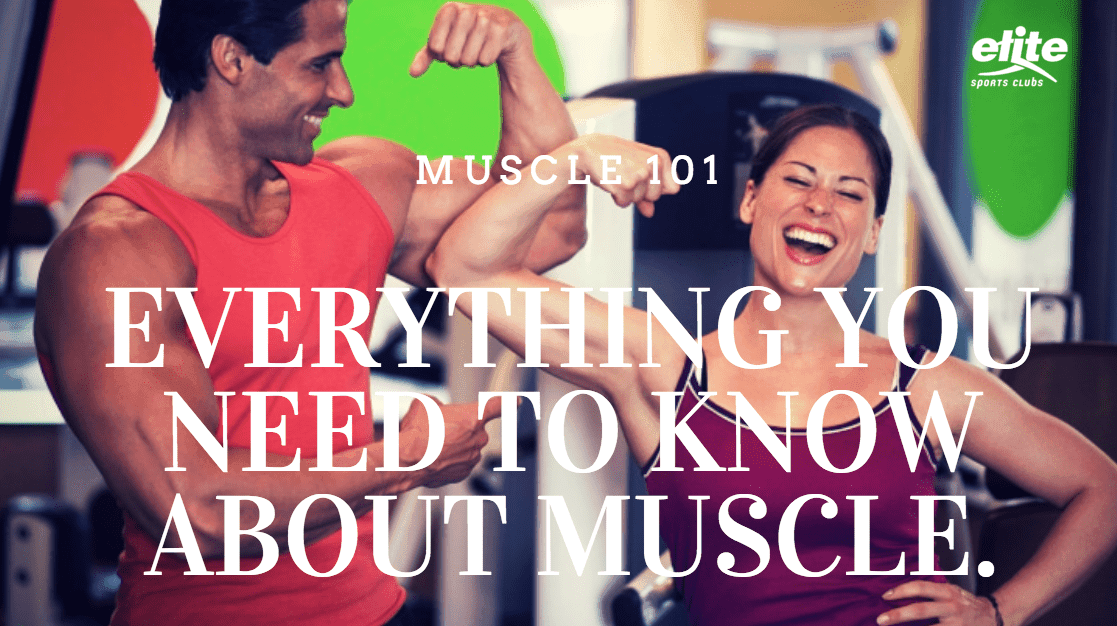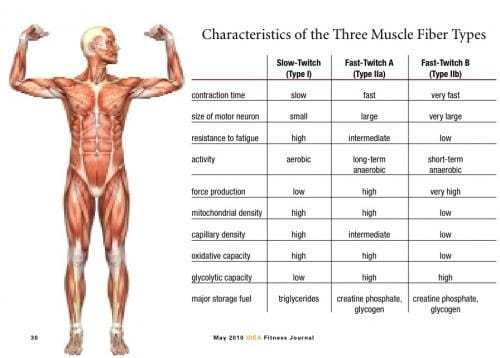
Learning the basics of muscle development can help you to reach your health and fitness goals.
Types of Muscle Fibers
We have two main types of muscle fibers in our skeletal muscles, Type 1, or slow-twitch, and Type 2, or fast twitch. The Type 2 are further separated into Type 2a, and Type 2b, and depending on your goals, your training methods will affect, to some extent, your results.
Each of us has a natural body type, and with that genetic potential, a larger amount of slow twitch or fast twitch fibers. You can visualize the person who easily completes endurance activities and has a natural tendency to gravitate to those as the person with a greater proportion of slow twitch fibers. The individual who does better with sprinting naturally, or builds large and defined muscles easily, is the person with more of the fast twitch fibers. But because we all have both, we can use our training to enhance one or the other, and we can achieve our goals based on how we train, as well as what comes naturally.
Check out the chart below:
Building Bigger Muscle
If your goal is to build muscle (hypertrophy), especially if you want to make them bigger, activating the Type 2b fibers will get you the best results. That means incorporating some High Intensity Interval Training (HIIT) into your program. Other benefits of HIIT include faster increase of your fitness level and higher calorie burning overall. If building larger muscle is your goal, you also need to address your reps and sets. Fewer repetitions with heavier weight will address this goal.
Building Endurance
If your goal is to complete a marathon, finish a 100 mile bike ride, or do some other activity that requires endurance, then your training approach will have to be different. Accessing the slow twitch fibers and building them toward a goal will build a smaller, more streamlined physique, with a completely different focus on lighter weights with more repetitions. Your aerobic training will likewise be different. You’ll be doing longer duration workouts, with a more steady state approach.
Male vs. Female
Hey, we’re different. Generally, it will be tougher for women to build larger muscle (though not impossible), and so if you are worried that you will get bulky, I’m here to allay that fear. It’s tough, takes a LOT of weight, and while a few conditions will lend themselves poorly to the building approach (PCOS and other endocrine imbalances), most women can work with either approach. Men have more muscle overall, and building additional, while it does take work, is a bit easier than it is for women. (You can read about my own experience with weight loss and muscle here.) It will just depend on what you want to accomplish with your workout program, how much time and effort you are willing to devote, and lastly…
What You Eat Matters
All those muscles need fuel, not garbage. So, if you’re serious about building muscle toward any goal, take a second look at your diet. Every item you put in your mouth should serve a purpose, not just satisfy a craving. Yes, I’m serious. Food is what creates new cells. If you want crappy cells, then eat crappy food. If you want strong cells that do their job, then eat proper fuel, with an eye toward PLENTY of fresh vegetables, to get your micro-nutrients and fiber, and some lean protein and fresh fruit, as well. The fruits and vegetables are enough carbohydrates. Last on your list (and maybe not even ON your list!) should be “puffy” foods…they are puffy, and they make you puffy. These would include cookies, crackers, cake, bread, muffins, and anything else of that ilk.
Keeping in mind the science behind how the body works will give you a healthy edge in achieving your goals.
Get Started! Tell us about your goals!
Written by Melissa Abramovich, ACE CPT, NASM CGT, AAHFRP Medical Exercise Specialist at Elite Sports Club-River Glen
Melissa Abramovich went into Personal Training and Group Exercise instruction after successfully losing 140 pounds through healthy diet and exercise. Her desire to help others drove her forward into a career helping others to make healthier choices. She is an ACE certified personal trainer and now also a Medical Exercise Specialist (AAHFRP), helping clients with a myriad of health issues at Elite Sports Clubs. She holds a Bachelor’s degree, and many group exercise related certifications as well.
